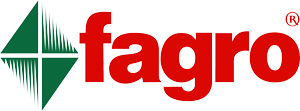
Pruning is a practice that regulates the vegetative and reproductive capacity of plants. This capacity is genetically defined by the variety and is strongly influenced by the rootstock and by the climate, soil and crop management conditions. Thus, in peach trees, pruning is, together with fruit thinning, the cultural practice with the highest incidence on fruit yields and quality and, therefore, significantly influences the profitability of the crop (Ojer, et al, 2011 ).
According to Valentini and Arroyo, 2003, pruning consists, essentially, in removing a part of a tree, shrub or floriferous plant in order to help nature in the direction and in the useful direction of man. In its broadest concept, it consists of the set of operations that are carried out directly on the skeleton or on the top of the plants in order to:
- Modify and / or control the size
- Form the plant and regulate the amount of flowers and fruits

Pruning not only regulates the fruit load, other responses are also produced in the plant, so it is necessary to know the physiological principles and their effects, in order to achieve maximum profitability and the sustainability of the crop over time ( Ojer, et al, 2011).
In general, there are three types of pruning applicable to both fruit trees and ornamental plants, although there are variants of them, the most important, technically speaking, according to Valentini and Arroyo, 2003, are:
a). Training pruning. Basically, it tends to achieve a well-endowed plant, with branches arranged in a convenient way, well balanced according to the objective pursued (hedge, open vase, low-growing plant, vine, etc).
During this period the plant is characterized by an intense vegetative activity and by the absent or little fruiting. It should be borne in mind that pruning exerts a depressive action on the development of the trunk, crown and root system, while on the contrary, the action exerted on individual branches stimulates their vegetative activity, making them more vigorous and coated of a larger number of larger leaves.

Taking into account the above, training pruning must meet the following requirements:
The skeleton of the plant should be formed in the shortest possible time.
The branches that will constitute the skeleton should be chosen when they are still in the bud state and followed until their full development, eliminating the competent buds and regulating their vigor by modifying their insertion angle. In some species (eg peach tree) the formation of second and third order branches can be easily accomplished using both normal and anticipated shoots.
In addition to the branches for the formation of the skeleton, the renovation branches must be guided.
b) Pruning of flowering or fruiting. Regulates the production of flowers and fruits. It is gradually applied to adult trees to preserve the imposed shape and to regulate the relationship between vegetative and productive activity.
c) Pruning of rejuvenation. It is normally carried out on trees and shrubs in the final period of the biological cycle to stimulate vegetative activity. It is also applied in the case of neglected, poorly formed and poorly flowering specimens.
Other types of pruning whose use is occasional and very specific are the Reform Pruning to modify the conformation of the crown and the Sanitation Pruning for plants with damaged branches or trunks.

Pruning is one of the most important activities that must be carried out from the establishment and during the development of fruit orchards, since it has a fundamental impact on production. It is evident that pruning cannot replace the deficiency of other activities that are also key, such as irrigation, fertilization and sanitary protection.
After pruning, it is necessary to apply certain products that will help us activate the crop and others to maintain its phytosanity:
Impulssor Vegetal: It is a growth regulator based on natural and synthetic substances that exert a biostimulant and nutritional effect on the crop, in a balanced way, so that it expresses its greatest potential for production.
Scoper MZ: It is a synthetic broad-spectrum fungicide ideal to form a layer of protection against fungal diseases, which attack branches and stems that were cut. Scoper MZ forms a protective layer on these wounds.
Bibliography
González-Durán I., y Salazar-García S. 2007. Uso de la Poda Progresiva para recuperar la productividad de huertos emboscados de aguacate “Hass” en Nayarit. Centro de Investigación Regional del Pacífico Centro. Campo Experimental Santiago Ixcuintla (INIFAP).
Ojer, M. (ed). 2011. Producción de duraznos para industria. Mendoza, Argentina, FCA Universidad Nacional de Cuyo. Cap. 8, pp. 79-94.
Valentini G., Arroyo L. 2003. La poda en frutales y ornamentales. Consideraciones básicas. Instituto Nacional de Tecnología Agropecuaria. Centro Regional Buenos Aires Norte.


There is evidently a bunch to identify about this. I feel you made some good points in features also.